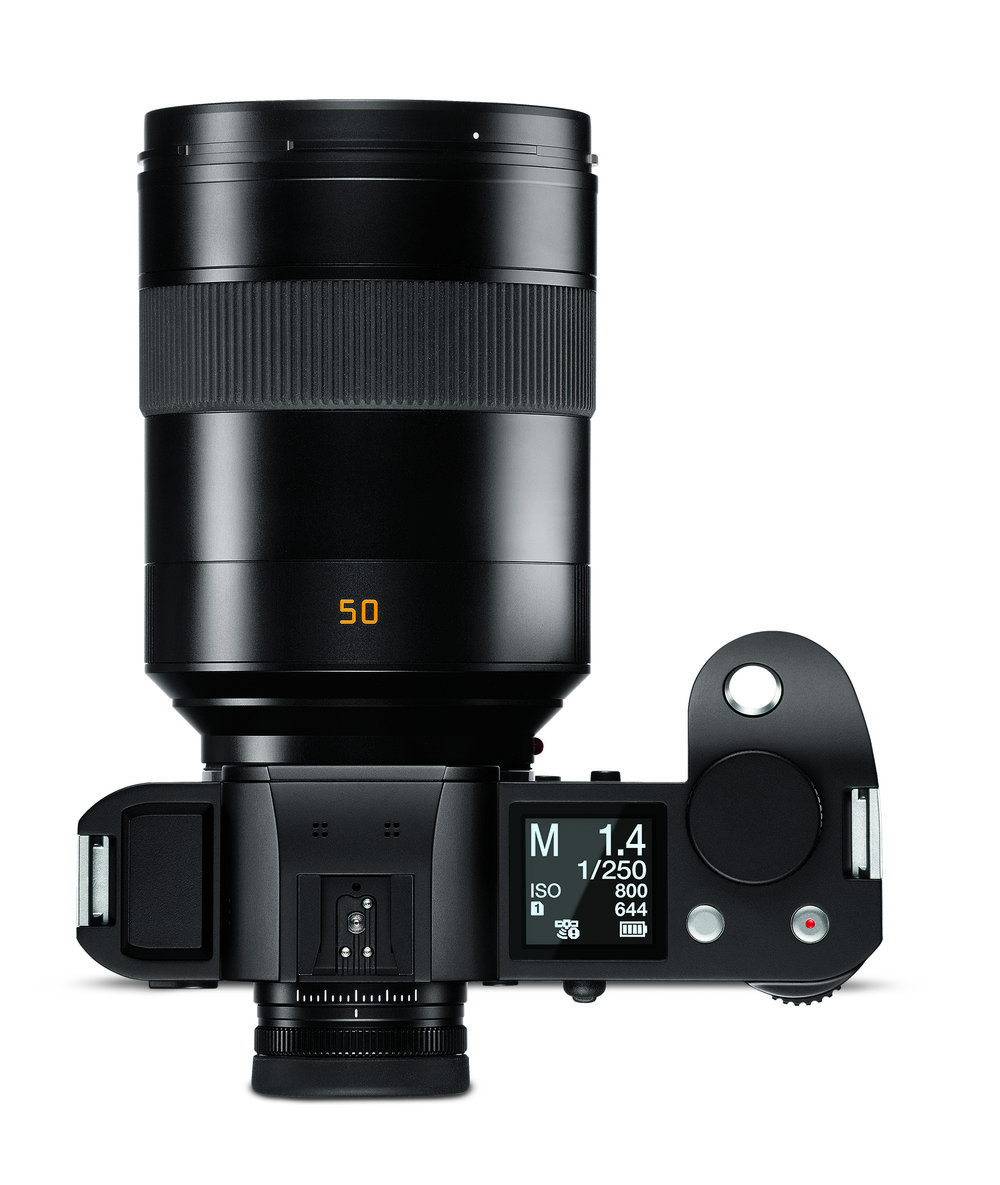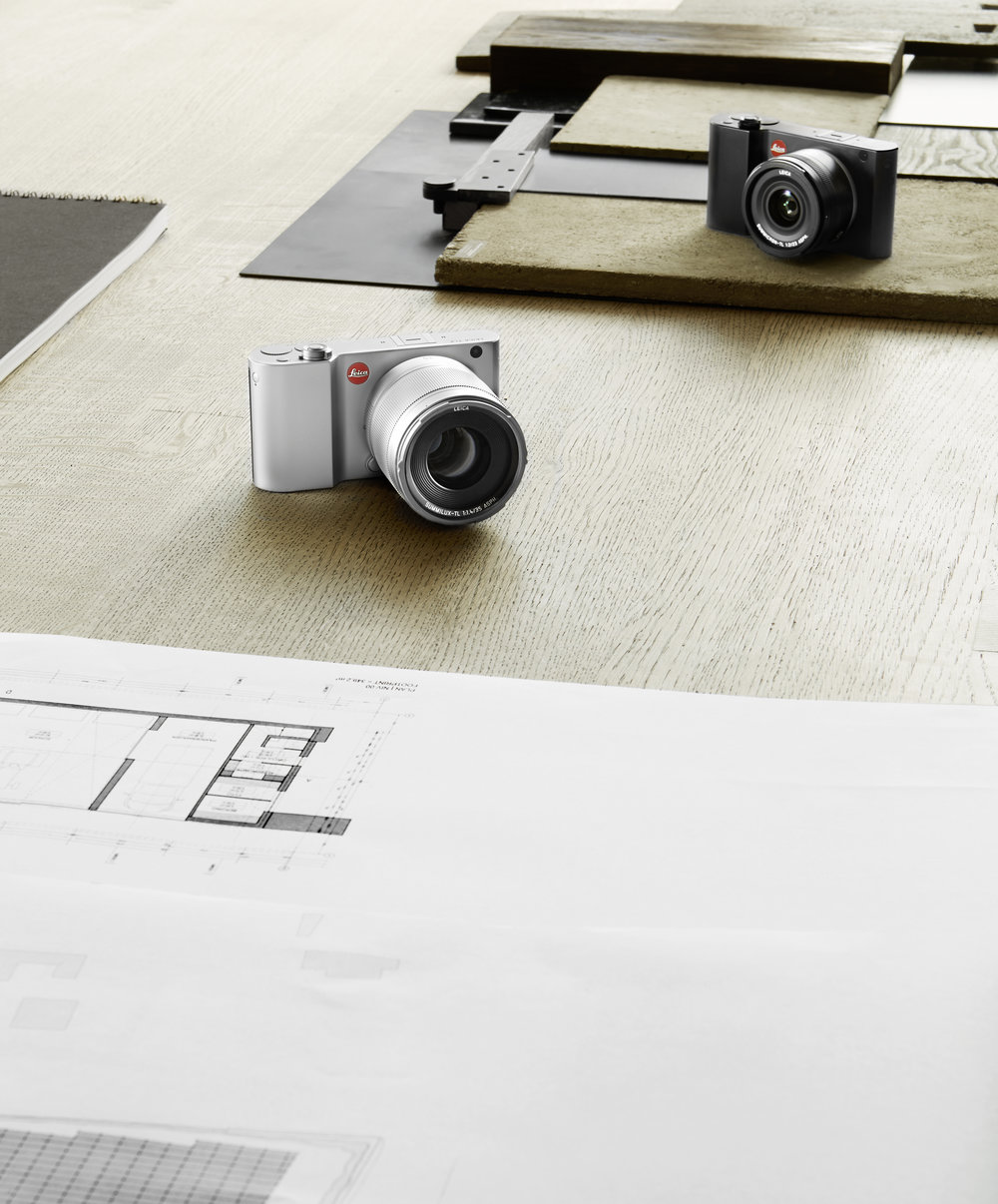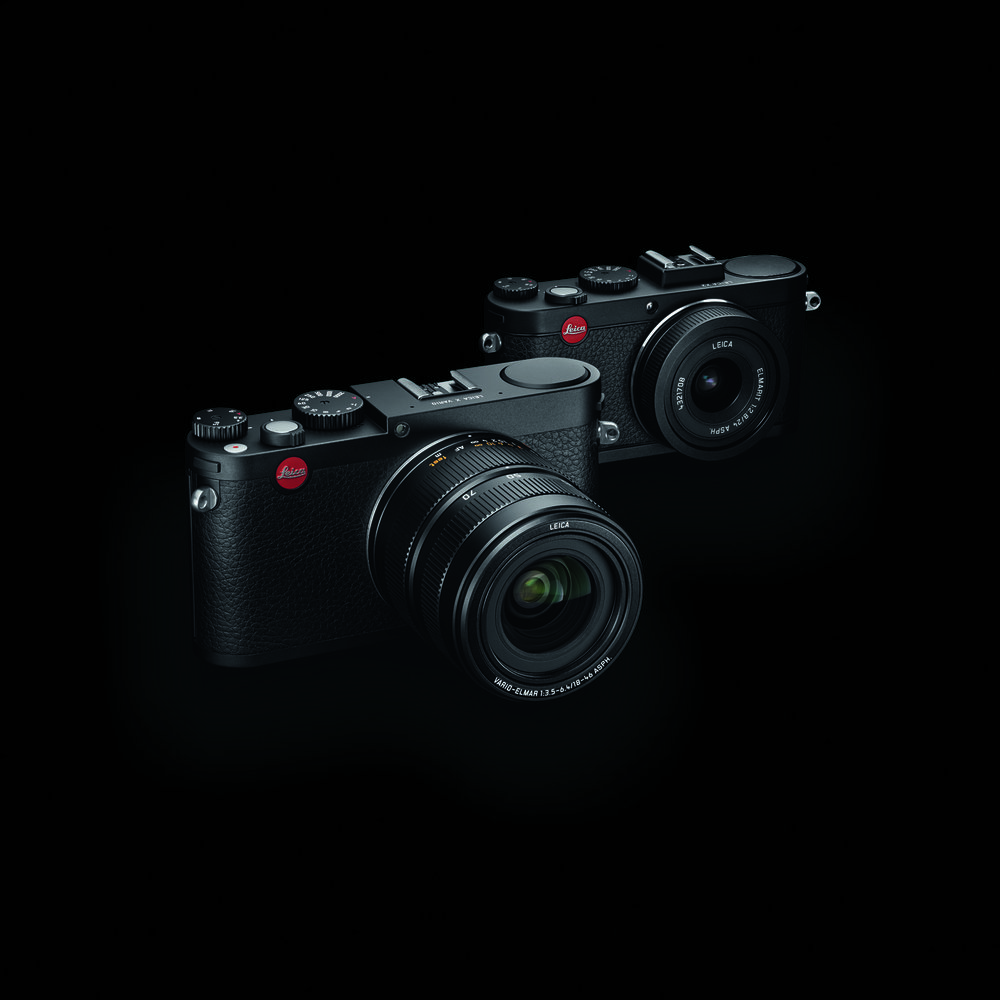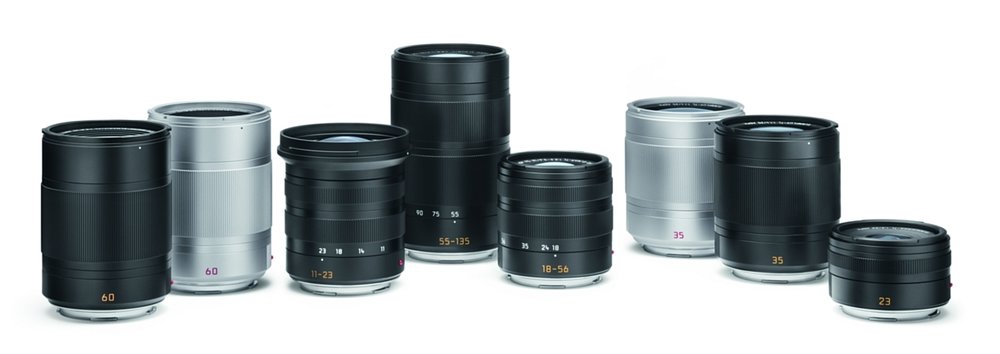
A week makes a big difference. Last Monday morning I was stifling a yawn as I turned up at Leica Mayfair to hear about the new TL2. I thought I knew the camera from all the reports I’d read and I was prepared to be decidedly underwhelmed. But it turns out I was wrong; the upgrade is actually quite compelling and most of the minor niggles with the T and TL have been addressed.
The reception of the new TL2 has indeed been better than I would have thought, given the continued lack of a viewfinder. Even I am impressed (when I tried hard not to be) and am looking forward to getting my mitts on a press demonstrator. Ignore the lack of a viewfinder and this is one very impressive camera. It’s worth putting up with the wart-like Visoflex to sample the speed and competence of the TL2. I think.
Yet none of this has stopped my continued contemplation of the future for Leica and APSC. I just cannot accept that a a camera with no built-in viewfinder is all that Leica can manage.
Where, I wonder, does the TL2 sit in the marketplace? Leica maintains that the target audience, aspirational smartphone photographers with a dollop of dosh in their pockets, don’t worry overmuch about viewfinders. What they want is an all-touch interface; and screen composing is what they are used to and will indeed demand if they are to be persuaded to buy a “proper” camera. But I’m not so sure.
I do not think the T/TL has really created a new market. From what I see, most TL owners are existing Leica photographers who desire something smaller to carry around than a full-frame system. They choose it because it is a Leica, because it has a range wonderful lenses and because the results are exceptional. These factors are enough to tip the balance against the undoubted charms of the Fuji X series et al. Even the touch-screen control system of TL2 is not a particular draw in itself; it is just something people accept and get on with. Some owners love it, some simply tolerate it. It definitely has its place, but it is not the be all and end all. For my part, I started off liking the interface it on the T, got disillusioned sometime in 2015 but have now come around to thinking it is again a Good Thing. It remains, though, the interface of a niche product and I would really prefer a more traditional approach.

New Model Army
What is indisputable is that the rise of the smartphone has created a new model army of budding photographers. Far from killing off the camera industry (except in relation to cheap point and shooters which are arguably inferior to the iPhone 7 Plus), the smartphone is actually attracting people to cameras — and to mirrorless cameras in particular. Sales are beginning to rise again after a continuous five-year decline.
These newbies are not looking for an iPhone experience in a camera, they are seeking a more capable device which, they hope, will hone their nascent photographic skills. But they are more than likely to favour Fuji, Olympus, Sony or Panasonic as a step up from a phone and that is Leica’s challenge. However, without a doubt, there is a Leica market out there among better-off upgraders as well as among the existing Leica community.
I am more than ever convinced that if Leica is to develop the APSC system — and take full advantage of the T mount — there has to be something a little more ambitious on the stocks. Indeed, I would be very surprised if such a chimera isn’t occupying the stocks at this very moment.
We can all dream. But I have a vivid imagination when it comes to a real enthusiast Leica APSC system. I know what I want.
SL Mini
We need look no further than the Leica SL. Now that is a great camera; it feels good, handles well, has a superb control system and the best electronic viewfinder in creation. For many people, though, it is just too big when paired with any of its system lenses, even the “starter” 24-90mm. An APSC sensor and the correspondingly smaller cropped lenses begins to appeal.
Imagine, for a moment, a mini SL: A scaled-down version of the full-frame offering with the new 24MP cropped sensor and all the speed of the TL2 under the bonnet. There is a ready made pantheon of T lenses to support such a camera and the overall size and weight would be much more acceptable than with the equivalent SL outfit. You are just settling for a bit less sensor and, I suspect, this is a trade off that would appeal to many.
If I were in charge of Leica product development (which thankfully I am not), this is what I would be working on. It is eminently feasible and it would create an unparalleled synergy between the company’s full frame and crop frame systems, both based on the new larger mount.
What about the old fixed lens X cameras, or the Q, you might say? Would that style of body suit a new APSC system? The Q shows that you can squeeze a viewfinder (and a good one at that) plus a larger sensor into a compact body. I am sure this style of body would do well in APSC form, but it would be a compromise. I was all for this until I saw and handled the SL. I believe that a camera made in the image of the SL (with that gorgeous top information screen and the minimalist control layout) would be a sure winner for Leica.
If such a camera were to be produced it would sell for considerably more than the new TL2, of course (the viewfinder alone is worth a bob or two on the tag). But TL2 in its present form would sit well alongside the more traditional approach of a new SL Mini interchangeable lens system. Priced at, say, £3,000 for the body (or, with some luck, only £2,500), this mini SL would sell well. Existing T owners with an existing stock of lenses would be first in line. And many Leica fans (and there are many) who have defected to Fuji would be re-examining their options.
What’s more, the SL-style approach would give Leica a distinct place in the APSC world without trying to compete directly with Fuji and Sony feature for feature.

Lenses
As for the TL lenses, they are a superb lot. I’ve used all of them with the exception of the 60mm macro, and all are exceptional. Leica, in the person of chief designer Peter Karbe, put everything into developing these lenses and it shows. The three zooms (11-23, 18-56 and 55-135mm) are about as far away from the traditional kit zoom as you could imagine. In fact, I’d happily use any of these zooms (the 11-23mm is perhaps the pick of the bunch, incidentally) in preference to a bagful of primes. On the prime front, while I can’t speak for the 60mm, the 35mm Summilux-TL is an outstanding optic, despite being rather bulky when that tunnel-like hood is mounted. This lens exhibits a lovely creamy bokeh and I like it immensely appealing, even for portraits. The 23mm is also good, though not as enticing as the 35mm. But it does excel in compactness, turning the TL2 into a very viable street photographer’s tool.
Yet since the introduction of the original T with its 18-56mm “standard” zoom, things have moved on a bit in terms of lens design and consumer preference. The original zoom’s 28-85mm equivalent range is now a tad dated in scope. The very designation smacks of old-school kit lensery. One by one, other manufacturers have widened the opening gambit to 24mm and extended the long end to 90mm. To my mind this is a preferable range for a basic zoom; I am. Is used to having 4mm on hand and feel deprived when 28mm is the widest you can go. They have also speeded up their offerings, some with a constant f/2.8 and others with f/2.8-4.0 (which seems to be Leica’s preferred option in order to keep size down. Look at the 24-90mm SL and the several Leica DG zooms for micro four-thirds).

On that theme, the eminent new Leica DG 12-60mm zoom for micro four-thirds offers an even more versatile 24-120mm equivalent at f/2.8-4.0. It is extremely compact for what it is. Leica could well leapfrog the opposition by producing an similar lens for the TL system — a 16-80mm f/2.8-4.0. Sublime.
Again, I should state that I have no inside knowledge on any this and my views are mere speculation. I’ve always been a dreamer. While I feel sure there will be a viewfinder-equipped APSC system camera arriving sooner rather than later, I have no idea if it will be a taller version of the TL2 (there was a rumour to this effect a few months ago) or will indeed be a radical mini SL. The latter is what I am hoping for.
What are you looking for in a Leica APSC system camera?
_______________

I have carried simultaneously two camera bodies, Nikons all, 300, DF and or D2 for years. Terrific, but often bland and always over optioned (endless settings, most avoided). I have pretty much moved to T system over the last two years. I think my shooting and creative breadth of expression is much improved. I have shot more and better B&W in the last year than I can recall.
Just finished two shoots this week with a TL2 , one a wedding, and that little filly does lock on flippin fast. I was able to get my Nikon speed lights and radio slaves working pretty well after some come to jessus blackout have I bricked the camera moments.
I am fine with the visoflexes because they swivel saving my aging vertebrae and the diopter is really sweet. The TL2 seems to be markedly less sharp in review which is more than a little disconcerting. But the horrible black out time in image review and write-to-card lag of the T seems to be way gone, which was the biggest problem of those bodies.
The wifi link to phone is much improved but the jury is still out. I just had my first server not found message.
The lenses, each of them is lovelier than the next. The 18-56 can be a bit bland but it is the sharpest thing I have seen. The 23 cron is a real thing of utility and beauty. The 35mm is hard to handle but so sexy when you can get the bit in its mouth.
I wanted to like the SL. B&H had already processed my mortgage application. Powerful machine but absolutely hated the size and weight.
This camera is looked down on because it is not rangefinder. I am not going to carry a musket into battle no matter how accurate. My favorite comment is that the T is Leica’s Edsel.
I assume the next TL lens-fitted camera will have a combo EVF/OpticalRangefinder like that Fuji.
An interesting story and some useful tips for readers. If you like to turn this into a little article (with some of your pictures) I would be happy to publish it.
Mike
The main fear of Leica decision makers is that viewfinder APSC cameras will canibalise the sales of all other FF cameras. The company should replace such managers with ones capable to find a feasable solution profitable both sides, the company and customers.
Valdo, I thank that might have been the case several years ago but I believe Leica now understands that the M rangefinder is a unique camera and will not be cannibalised. By introducing the SL they acknowledged this myth. There is now a perfectly good full-frame mirrorless camera available, and one that works especially well with M lenses. Yet it has not killed off the M, which appears to go from strength to strength. There has been some arrogance in not accepting the obvious — that a built-in viewfinder is essential if a mirrorless camera is going to be a big success. Whatever they may have said about the X-series cameras or, indeed, the T/TL/2, the fact remains that the unparalleled success of the Q is down mainly to one feature — its excellent viewfinder. When they apply this logic to a mirrorless APS-C system camera then the tills will start ringing again.
A nice article, Mike. I hope that Mr. Kaufmann will read it. Until an APSC system like the one you talked about will come out, I’ll stick with my "combo" that I really love to work with: Leica M-P (240) and Fuji X-Pro2. Besides that I hope that the M11 will have a viewfinder like the X-Pro2. 😉
Keep up the good work and let’s hope for the best.
Your comments are 100% spot on. That’s why I bought the Fuji XT2 with 16-55 F2.8 to go with the M240.
A very fascinating area of informed speculation, Mike, and any of the variations would be interesting. But since Leica are doubtless never going to include a vari-angle or even tiltable screen, I DON’T want a viewfinder incorporated, tho’ you and everyone else I read seem to think it’s time Leica did just that! Whatever happens to the aesthetics of the camera, I do want a tiltable EVF, which gets a great deal of use on my X-Vario. Presumably that will have to be an add-on. OK by me.
That’s a very good point, John. Since only Panasonic seem able to offer this tiltable EVF (in the GX8) it’s unlikely Leica would oblige. I agree that the external EVF does have this advantage.
Mike,
I am with you 100% functionally in all respects…except for the body style. I find the "pentaprism-inspired" top lump (EVF) on the SL just about as grotesque as its counterpart predecessor on the Sony A7 line (I have the A7Rii)…and I was eager to see the rumored 6mm taller TL2 which didn’t materialize. The sleek, no-lump body of virtually every Leica but the Reflex and S has historically been a hallmark. And though many think the round Visoflex is an ugly addition, I rather like it as it reminds me of the oldies that Alfred Eisenstadt used to carry around with the circular, bullet-like shoe-mounted viewfinders.
But even with a lump…your prescription is just about perfect…especially expanding the range of the basis lens to 24-90 equivalent. Let’s hope the folks at Leica are paying attention.
All best!
Alan Chimacoff
Princeton, NJ USA
http://www.chimacoff.com
Alan, we aren’t that far apart. I could be very happy with a smaller Q but with L mount and APSC sensor. Perhaps there is room for both.
Hi Mike
following your website for some time now and I like what you write. It mirrors a lot of my thinking and brings in your own experience. As a photo enthusiast I am I follow the camera industry for a long time. We have a very changing world, every day new releases.
Many of us are waiting on the right Leica, with AF, EVF, compact enough to carry, good selection of lenses, and last but not least affordable. Don’t let us forget, a simple starter kit of TL2, lens and EVF cost something like 4000 Euro. The same as a Leica Q which has bigger sensor. For the price of this TL-Kit you can buy elsewhere very very nice camera systems. We Leica fans know, that we cannot compare other items 1:1 with comparable Leicas. Differences get smaller year to year. Are we still ready to pay a lot more? The camera market say yes. M10 and Q are still sold out and production is behind orders.
So me I am waiting for a solution in-between X and Mini-SL with a conventional operating system à la Q. I would be very happy with a Q and a lens of 40mm. Nothing can replace a real camera, no gimmicks and deeply menu systems which make it harder to work. Less is more, simplicity over tech frustration.
This autumn we should expect a new Leica model of hopefully that kind of class.
Just my thinking
Daniel Rutschmann
Many thanks, Daniel, and glad you like Macfilos. I just write what I think and don’t feel obliged to anyone. I agree with your comments. There is a lot of competition out there but most Leica fans will remain loyal if the offering is a) as good and b) not too expensive. I agree on the Q. I even think the Q with an L mount would make a lighter alternative to the SL. But the Q with a slightly smaller body and APSC sensor (plus L mount) would definitely interest me. The idea of a "mini SL" is probably a step too far, but I can’t help thinking it would be a success.
Maybe Leica Camera AG ‘caught a cold’ when they introduced / marketed (not) the ‘mini m’ … with the result that anything ‘mini’ could now be now a ‘no go’. Once bitten twice shy …?
Ah, yes. Mini SL was just my working title. It could be called the TS, couldn’t it?